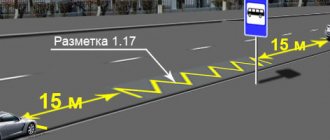An entrepreneur who decides to use the leasing service will definitely be faced with a choice: what type of this service to use. Leasing is provided in two forms: financial and operational (also called operational). The difference between these forms of service lies in the duration of the leasing agreement and the conditions under which the object of the leasing transaction is transferred. In order not to make a mistake and choose the form that is best suited in a particular situation, it is necessary to distinguish between types of leasing and clearly understand their features.
financial leasing
What is financial leasing? We offer a detailed overview of this type of financing with an analysis of the conditions and an analysis of the pros and cons. Financial leasing is a method of financing in which one party (the lessor) undertakes to purchase specific property from the seller and transfer it for temporary long-term use to the other party to the transaction (the lessee). In this case, the recipient of the leased asset undertakes to make regular payments throughout the entire term of the contract, essentially paying its full cost. At the end of the lease agreement, the lessee purchases the property.
Operating leasing
The first type of leasing is operational.
Quite often it is called the operating room. Operating leasing allows you to rent, or otherwise lease, a car for a certain period, usually quite short. During this period, only partial depreciation of the car occurs. Afterwards the equipment is returned back to the leasing company. This method is very successful for legal entities. They can lease new property on favorable terms without any obligation to repurchase it. The productivity of the enterprise improves, since for short-term work, transport is not purchased, but is rented for a certain fee.
The only condition is that the applicant comply with the conditions for maintaining the vehicle. Its characteristics and condition must be maintained until the termination of the contract.
Having a problem? Call our customs specialist:
Moscow and region (call is free)
Saint Petersburg
Signs of operational leasing
The following main features of operational leasing are distinguished:
- Short term of the contract. In practice, it rarely exceeds 3 years. During this time, the depreciation properties of the property do not change, and the tenant does not have time to pay its full cost.
- Vehicles can be involved in transactions multiple times.
- The leasing company does not accept applications for the purchase of a car on lease. In other words, the applicant can choose only those brands and models that the organization has in stock. This sign is negative both for the company itself and for the applicant. The lessor cannot be sure that the acquired property will be used in future transactions and will pay off. And the applicant has limited choice.
- Maintenance and insurance of the car is entirely the responsibility of the lessor, since he is the legal owner of the property.
- At any time, the recipient of the company's services can stop cooperating with it and terminate the contract. To do this, you must notify your partner in advance.
- The monthly payments for operational leasing are much higher. This is due to huge risks. Property may be damaged or lost.
- After termination of the contract or upon expiration of its validity period, the property is returned back to the service provider.
Operating leasing is a lease without subsequent purchase of an object.
Peculiarities
The validity period can be extended by the recipient for a period specified by him. It is worth remembering the feasibility of such a decision. If the lease term exceeds 5 years, then it is more profitable to take financial leasing rather than operational leasing. But we'll talk about it a little later.
The formation of a secondary market is inevitable. A leasing company, when purchasing property, cannot be sure that it will participate in transactions. Every year, cars and other equipment become outdated and lose their properties, and the demand for them is falling.
In addition, losses for damage to property lie entirely with the lessor. The recipient must monitor the condition of the vehicle, but does not bear any responsibility if it deteriorates.
The terms of the contract are quite flexible and are discussed in advance. Companies always accommodate their clients and try to establish more favorable conditions for them. They depend on the status of the applicant, his financial capabilities and goals, the value of the object of the transaction and many other factors. This is a great advantage of operational leasing, which sets it apart from all other methods of acquiring property.
Characteristic features of financial leasing
- The leasing company buys the property not for its own use, but in order to transfer it for long-term lease to the client.
- To purchase the leased asset, the lessor can use his own or borrowed funds.
- The lessee can choose the seller of equipment, vehicles and other leased items based on his budget and the specifics of the business.
- The Seller/Supplier is notified that its goods are being purchased under leasing terms, so the purchased property is supplied directly to the lessee, and not to the leasing company.
- In the event that problems arise with the operation of leased equipment, the lessee must file claims with the seller/supplier.
- The lessee is responsible for the leased property, so he must ensure safe operating conditions and insure it.
The difference between operating leasing and financial leasing
The meaning of financial leasing is the sale of property through rent with subsequent purchase. In this, it is similar to a targeted loan, with the only difference being that the lessor remains the owner of the property throughout the duration of the contract.
The economic essence of operating leasing is long-term lease, not sale. Based on this, the main difference between operational leasing and financial leasing is the absence in the agreement of a clause on the transfer of ownership rights to the lessee or specified conditions for the purchase of property at the residual value.
Where can I find out how much I owe on a fine? Read the article, administrative fine, find out the debt by name. About personal income tax on dividends to non-residents in 2021. More details here.
Leasing agreement
The terms of cooperation between the parties are regulated by the leasing agreement. Parties to the leasing transaction:
- Seller/Property Provider.
- The buyer is a leasing company.
- The user is the lessee.
- The insured is an insurance company.
The agreement specifies the details of all parties to the transaction, their rights and obligations, conditions for the supply of property, the amount of regular leasing payments, and the repayment schedule. Each party to the transaction pursues its own goals: the seller wants to sell his goods; lessor - earn interest on financial lease; the lessee is able to purchase equipment without loans and guarantors, update means of production without high costs.
Advantages of financial leasing
- The down payment is minimal. The amount of the advance payment can be from 10, and for some leased items even 5 percent.
- The requirements for the financial condition of the lessee are not as high as in the case of bank lending. Even a company that has been on the market for only 3 months can purchase property on lease (not all leasing organizations operate under such conditions).
- The lessee can distribute the burden on the budget evenly over the entire term of the transaction. The amount of lease payments can be adjusted by changing the term of the contract, the amount of the advance or redemption payment.
- Purchasing property through financial leasing often involves discounts and additional bonuses for the lessee.
- Tax benefits and depreciation benefits.
- Regular leasing payments are taken into account as expenses (cost), so the taxable profit base is reduced.
- Refund of value added tax on leasing property up to 20%.
The key advantage of financial leasing is the ability to quickly and on favorable terms acquire the fixed assets necessary for a business, update and expand the production base. A special advantage is the long transaction period of up to 10 years, after which the leased property becomes the property of the lessee.
Fill out the form online and we will select a profitable and suitable leasing program
What it is
Operating leasing is a type of leasing transaction when the lessor buys property in advance and leases it to the lessee for use for a short period. Upon expiration of the contract, the leased asset may be returned to the lessor as unnecessary or leased again.
After the end of the contract, the tenant does not receive ownership of the property. But he can rent it a second time on more favorable terms due to partial wear and tear. Ultimately, the property can be purchased by the lessee at its residual value.
Rent or purchase
The fundamental difference between the different forms of leasing is that operating leasing is more like a long-term lease. The object of the agreement is transferred for use for a monthly fee, and at the end of the agreement it may not be purchased, but returned to the lessor. After this, the object can be leased out again to other clients. Financial leasing is more of an installment purchase. The leased object, transport or equipment, after the end of the agreement and payment of the difference between the cost and the amount of lease payments, necessarily becomes the property of the client. If you compare the cost, then operating leasing is always much more expensive.
Timing and amortization
The market in which operating leasing is most common is the automotive market. The reason for this is the predictability of changes in the value of an asset in the car market over time. The list of cars available for leasing today includes almost all brands and models presented on the domestic market. Recently, leasing companies have significantly expanded their offer, since this service can now also be used by individuals. Despite the prevalence of this service, the volume of financial leasing is incomparably larger, because most clients of leasing companies prefer to buy out the leased object as their own. Another significant argument when choosing a form of leasing is the opportunity to optimize the tax burden for a business. The financial leasing agreement is concluded for a period corresponding to the depreciation period. For operational leasing, the agreement lasts less than the depreciation period of the equipment, which will subsequently be used by new clients of the leasing company.
Hassle-free operating leasing
At the moment, operating leasing is not so common in Russia. To develop this service in the country's market, certain conditions must be met. The main one is the developed market for various types of secondary property. Its presence allows the lessor to adequately calculate the cost of the equipment provided and returned and weigh its risks. The cost of operating leasing is also several times higher than financial leasing. The reason for this is the need to organize a whole range of equipment maintenance services that the leasing company provides to clients. The client is spared from performing such tasks as routine repairs and seasonal maintenance of vehicles, undergoing technical inspection, etc. Such conditions are beneficial for small companies that need a fleet of vehicles, but do not have the ability to support all these complex business processes. The underdevelopment of the market, the complexity of organizing processes and high costs lead to the fact that only a few leasing companies offer operating leasing services.
Peculiarities
Characteristic features of operational leasing:
- The contract term in such a transaction is usually much shorter than the standard service life of the leased asset. The costs incurred by the lessor when purchasing and maintaining the property are not covered during this time;
- Lease payments are higher than in financial leasing due to the high risks of the lease provider;
- The property can be rented out multiple times;
- Termination of the contract is possible at the initiative of the lessee if for some reason the operation of the property is impossible;
- Repair and maintenance of property is usually carried out by a leasing company;
- Risks associated with damage and loss of property are borne by the leasing company;
- Property is not purchased according to the order of a specific client, but in advance.
The last point suggests that the lessor must be well aware of the needs of the market. Property purchased in advance must be in demand in the future.
Financial leasing as an alternative to credit
The majority of clients of leasing organizations are small companies that do not have the opportunity to withdraw large sums from circulation to purchase equipment, and at the same time, for various reasons, cannot take out a loan for these purposes from a bank. For example, a bank sets strict requirements for small and medium-sized businesses when issuing a loan, but leasing companies do not. Thus, using leasing, although the client overpays, he gets the opportunity to update and expand the base of fixed assets without the need to withdraw significant amounts from circulation.








